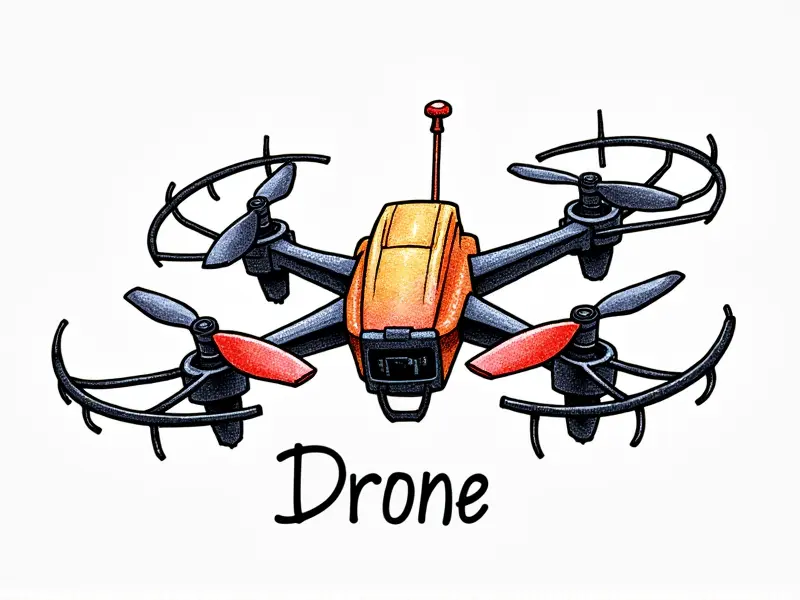DIY RC drone controller

Beginner's Guide: DIY RC Controller
Welcome to the exciting world of building your own remote control (RC) drone controller! Whether you're a hobbyist or an enthusiast, crafting your very own custom controller can be both rewarding and challenging. This guide will walk you through the process step-by-step, ensuring that even beginners can create their dream RC drone controller.
Step-by-Step DIY RC Drone Controller Build
Building a custom RC drone controller involves several key steps:
- Selecting Components: Choose the right components such as joysticks, switches, and microcontrollers based on your requirements.
- Designing Layout: Plan out the layout of your controller to ensure optimal ergonomics and functionality.
- Wiring Up Components: Connect all electronic components according to your design using appropriate wiring techniques.
- Programming Firmware: Write or adapt firmware that translates joystick movements into commands for the drone.
Create an Awesome RC Drone Controller
To create a truly awesome RC drone controller, focus on these aspects:
- Ergonomic Design: Ensure your controller is comfortable to hold and use over extended periods.
- Customizability: Allow for easy customization of buttons and functions to suit various drones or specific flying styles.
- Reliability: Use high-quality components that are durable and reliable, ensuring your controller lasts long and performs well.
Crafting a Custom RC Drone Controller
The process of crafting a custom RC drone controller starts with understanding the basics:
- Understanding Electronics: Gain knowledge about basic electronics, including circuit boards, resistors, and capacitors.
- Learning Programming Languages: Familiarize yourself with programming languages like Arduino or Python to control your controller's firmware.
- Practicing Assembly Techniques: Learn how to solder, wire, and assemble electronic components effectively.
Make Your Perfect RC Drone Controller
To make your perfect RC drone controller, consider the following tips:
- Identify Needs: Determine what features you need in a controller based on your flying style and preferences.
- Research Components: Look for high-quality components that meet your requirements.
- Prototype Testing: Build prototypes to test functionality before finalizing the design.
Easy DIY RC Drone Controller Setup
Setting up a DIY RC drone controller is straightforward with these steps:
- Gather Materials: Collect all necessary materials such as joysticks, switches, and microcontrollers.
- Assemble Components: Follow your design to assemble the components into a functional prototype.
- Test Functionality: Test each component individually before testing the entire setup for proper operation.
Homemade RC Drone Control Solution
A homemade RC drone control solution offers several advantages over store-bought controllers:
- Cost-Effective: Building your own controller can be more affordable than purchasing a commercial one.
- Customization: Tailor the controller to fit your specific needs and preferences.
- Educational Value: Learn valuable skills in electronics, programming, and design through this project.
DIY RC Joystick for Drones
Creating a DIY joystick for drones involves the following steps:
- Selecting Joysticks: Choose joysticks that provide accurate control over your drone's movements.
- Connecting to Microcontroller: Connect the joysticks to a microcontroller like Arduino or Raspberry Pi for processing signals.
- Programming Control Logic: Write code to interpret joystick inputs and send appropriate commands to the drone.
Build an Affordable RC Drone Controller
To build an affordable RC drone controller, follow these guidelines:
- Choose Economical Components: Opt for cost-effective components without compromising on quality or performance.
- Leverage Open-Source Software: Utilize open-source software and libraries to reduce development costs.
- Design for Repetition: Design your controller in a way that allows for easy replication if you plan to build multiple units.
Step-by-Step RC Drone Controller DIY
The step-by-step process for building an RC drone controller includes:
- Planning Phase: Define your requirements and sketch out the design of your controller.
- Gathering Materials: Acquire all necessary materials including joysticks, switches, microcontroller, and wiring components.
- Assembly Process: Assemble the components according to your design, ensuring proper connections and functionality.
Custom RC Drone Controller Build
A custom RC drone controller build offers unique benefits such as:
- Personalization: Customize your controller with personalized features like LED indicators or additional buttons.
- Flexibility: Adapt the controller to work with different types of drones and flying conditions.
- Innovation: Experiment with new technologies and techniques to push the boundaries of RC drone control.
Conclusion
Building a DIY RC drone controller is an exciting endeavor that combines creativity, technical skills, and practical application. By following this guide, you can create a custom controller tailored to your specific needs and preferences. Whether you're looking for cost savings, personalization options, or educational value, crafting your own RC drone controller offers numerous benefits and opportunities for growth in the field of robotics and electronics.

